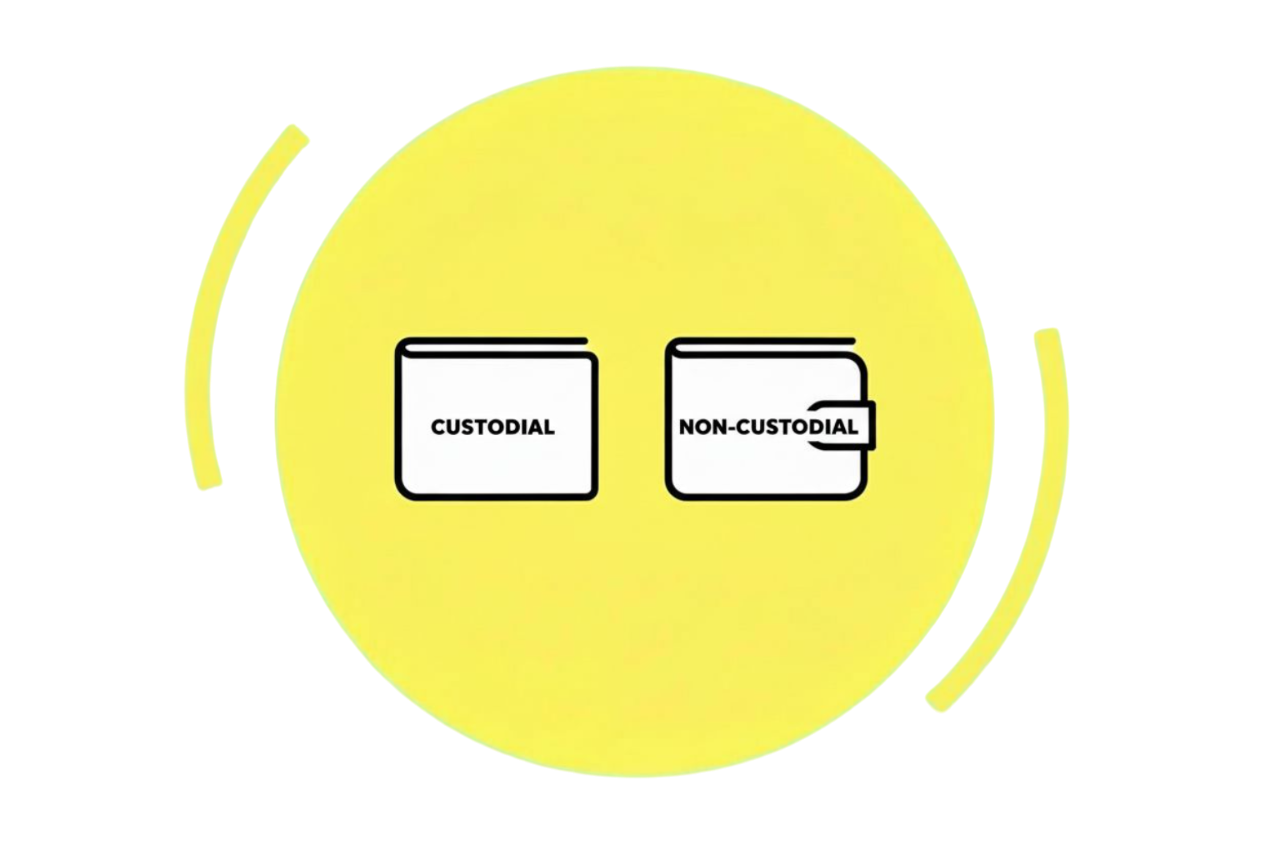5.2 Custodial vs. Non-Custodial Wallets

Choosing between custodial and non-custodial wallets is akin to deciding between a bank safe deposit box and a home vault: one offers convenience with shared responsibility, while the other demands full self-reliance for ultimate control. This distinction is crucial, as it directly impacts your asset security and autonomy in the crypto ecosystem.
Custodial Wallets

Custodial wallets are managed by third parties, such as cryptocurrency exchanges (e.g. Coinbase or Binance), where the provider holds your private keys. This setup is user-friendly, especially for beginners, as it handles key management, backups, and even recovery if you forget your login. Pros include seamless integration with trading platforms, built-in insurance against hacks (in some cases), and features like two-factor authentication (2FA). However, the cons are significant: You're trusting the custodian with your funds, exposing them to risks like platform bankruptcy (as in the FTX collapse), regulatory seizures, or internal hacks. If the provider fails, your assets could be frozen or lost, underscoring the mantra "not your keys, not your crypto."
Examples:
- Centralized exchanges (CEXs) like Binance, Coinbase, Kraken, and Crypto.com provide custodial wallets.
- Mobile apps or web wallets that log you in without ever showing you a private key or seed phrase.
Pros:
- ✅ User-friendly: Great for beginners; easy to recover your account if you lose your login.
- ✅ Integrated features: Often linked with trading, staking, and fiat on/off ramps.
- ✅ Customer support: You can contact support if you have issues.
Cons:
- ❌ No control over private keys: "Not your keys, not your crypto." If the provider is hacked, goes bankrupt, or freezes your account, your funds could be lost or locked.
- ❌ Censorship risk: The provider may freeze or limit your transactions.
Non-Custodial Wallets

Non-custodial wallets, on the other hand, put you in complete control by storing private keys on your device or hardware. Examples include software like Electrum or hardware like Trezor. Here, you're responsible for security, but you gain true ownership—funds can't be censored or seized without your consent. Pros encompass enhanced privacy (no KYC required in pure forms), resistance to third-party failures, and portability across devices. Drawbacks include the steep learning curve and the risk of self-inflicted loss, such as forgetting your seed phrase or falling victim to phishing.
For most users, a hybrid approach—using custodial for small, active amounts and non-custodial for larger holdings—balances convenience and security. Always research the custodian's reputation and regulatory compliance.
Common Examples:
- Software wallets like MetaMask, Trust Wallet, and Phantom.
- Hardware wallets like Ledger and Trezor.
- Paper wallets and cold storage setups.
Pros:
- ✅ Full control: You own and control your crypto at all times.
- ✅ Privacy: No need to provide personal information to use most non-custodial wallets.
- ✅ Censorship-resistant: No central authority to block transactions.
Cons:
- ❌ You’re responsible: Lose your private key or seed phrase, and your funds are permanently lost.
- ❌ Less beginner-friendly: Interfaces can be more complex, and there’s no password reset.
Which One Should You Choose?
- If you're just getting started, or planning to trade frequently, a custodial wallet may be more convenient—but understand the risks.
- If you value self-sovereignty, security, and control, and are ready to take responsibility for safeguarding your private keys, a non-custodial wallet is the better option.
Many advanced users eventually move from custodial to non-custodial wallets as they grow more confident in managing their own crypto.
We've explored the key differences between custodial and non-custodial wallets, emphasizing control, security, and the user's role in safeguarding their assets. As you now understand, choosing the right wallet type is crucial depending on your level of involvement and trust in third parties.
With that foundation in place, let’s dive deeper into another important aspect of cryptocurrency wallets: the difference between hot and cold wallets. This next lesson will explore how these two types of wallets manage security, access, and convenience, giving you a better understanding of when and why to use each.

